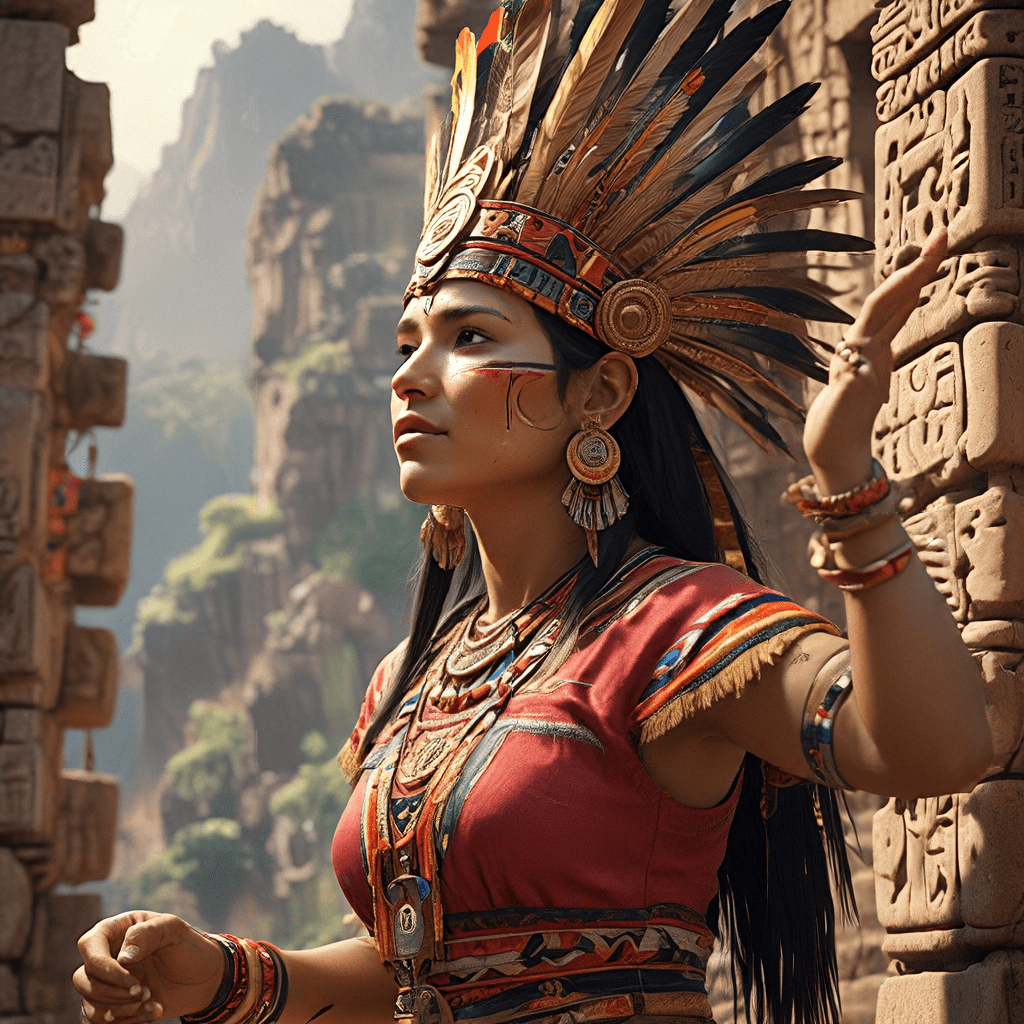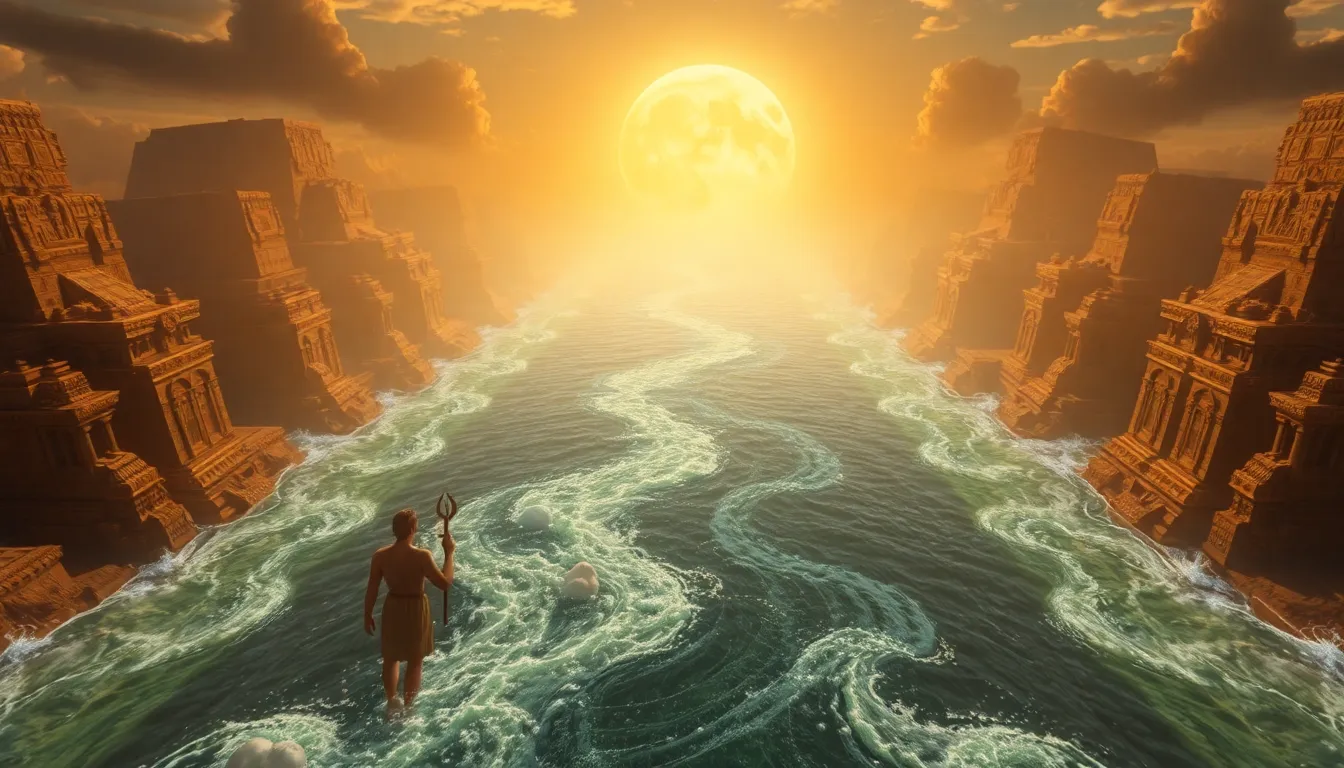Incan Mythological Music: Harmonies of the Divine
The ancient Incan civilization, known for its intricate architecture, sophisticated agriculture, and advanced social structures, also possessed a rich tapestry of myths and legends that permeated every aspect of their lives. Incan mythology revolved around a vibrant pantheon of deities and spirits, each representing a powerful force in the natural world and human existence. These divine beings were not mere abstract concepts but were deeply intertwined with the rhythms of nature, the cycles of life, and the very essence of the cosmos. Music, in its various forms, played a pivotal role in Incan society, serving as a conduit to the divine, a medium for expressing reverence, and a means of connecting with the spiritual realm.
The Incan Pantheon: A World of Deities and Spirits
The Incan pantheon was a complex and diverse assembly of gods and goddesses, each with their own distinct domains and attributes. At the pinnacle of this celestial hierarchy stood the Sun God Inti, the source of life, light, and warmth. The Moon Goddess Mama Killa, the celestial counterpart to Inti, ruled the night, the cycles of growth, and the ebb and flow of time. Viracocha, the Creator God, held dominion over the cosmos, shaping the world and bringing forth life. Other notable deities included Pachamama, the Earth Mother, who embodied the bounty and fertility of the land; Illapa, the Thunder God, who brought rain and lightning; and Mamacocha, the Sea Goddess, who held sway over the vast ocean depths.
Each deity was associated with specific natural phenomena, rituals, and offerings, creating a web of beliefs and practices that permeated Incan life. The Incas believed that these deities were not distant or indifferent beings but were actively involved in the affairs of mortals, intervening in their lives, offering guidance, and dispensing justice. The Incan people venerated these deities through elaborate rituals, offerings, and prayers, seeking their favor and protection.
The Significance of Music in Incan Culture
Music was deeply ingrained in Incan culture, serving as a vital component of their social, religious, and spiritual life. Incan music was not merely a form of entertainment but was considered a sacred art, a means of communicating with the divine, expressing emotions, and celebrating life's milestones. The rhythmic beats of drums, the haunting melodies of flutes, and the polyphonic harmonies of vocal chants all played integral roles in Incan rituals, ceremonies, and daily life. For the Incas, music was a powerful force that could evoke emotions, inspire awe, and connect them to the spiritual realm.
The Sun God Inti: The Heartbeat of the Cosmos
Inti, the Sun God, was the most revered deity in the Incan pantheon, representing the source of life, light, and warmth. He was seen as the heartbeat of the cosmos, his daily journey across the sky nourishing the earth and sustaining life. The Incas believed that Inti's power was embodied in the sun's rays, which they associated with golden threads that connected the heavens to the earth. Music played a significant role in honoring Inti, with songs, dances, and rituals dedicated to his glory.
The Moon Goddess Mama Killa: The Rhythms of Time and Growth
Mama Killa, the Moon Goddess, was the celestial counterpart to Inti, her gentle glow illuminating the night and guiding the cycles of growth. She was associated with the rhythms of time, the phases of the moon, and the ebb and flow of the tides. Mama Killa was revered for her nurturing influence, her connection to fertility, and her power over the natural world. Incan music reflected Mama Killa's influence, with chants, dances, and rituals dedicated to her lunar cycles and her role in sustaining life.
Musical Instruments: Echoes of the Divine
Incan musical instruments were not mere objects but were considered sacred vessels that channeled the divine energy into the world. Each instrument carried a unique symbolism and was believed to possess a specific power. The most common instruments included:
The Quena (Panpipe): The quena, a type of panpipe, was perhaps the most ubiquitous and beloved instrument in Incan music. It was associated with the Sun God Inti and its haunting melodies were believed to evoke the celestial harmony of the heavens.
The Pututo (Shell Trumpet): The pututo, a large seashell trumpet, was used in ceremonial gatherings, particularly those related to Inti and Mama Killa. It was believed to carry the power of the sea and the moon, its deep, resonant tones resonating with the forces of nature.
The Tarka (End-blown Flute): The tarka, a small end-blown flute, was often played by shepherds and was associated with the earthly realm. Its simple, lyrical melodies were believed to symbolize the harmony of nature and the cycle of life.
The Drum: Drums played a crucial role in Incan music, their rhythmic beats setting the tempo and conveying a sense of energy and vitality. The Incas used various types of drums, including the tinya, a small hand drum, and the wakra, a large drum used for ceremonial purposes.
The Harp: The harp, a stringed instrument, was less common than other instruments but was still valued for its melodic and expressive qualities. It was often used to accompany songs and dances, adding a touch of elegance and sophistication to musical performances.
These instruments were not simply used for entertainment but were integral to Incan rituals, ceremonies, and daily life. They served as a conduit to the divine, a means of expressing reverence and gratitude, and a way of connecting with the natural world.
The Role of Music in Rituals and Ceremonies
Music played a paramount role in Incan rituals and ceremonies, serving as a bridge between the human world and the divine realm. Each ritual was accompanied by specific songs, dances, and instrumental music, carefully designed to invoke the favor of the deities, invoke blessings, and ensure harmony and prosperity.
Sun Worship: Rituals dedicated to Inti, the Sun God, were central to Incan life. They involved elaborate offerings, processions, and sacrifices, all accompanied by music and dance. The quena, the pututo, and drums were frequently used to create a sense of awe and reverence for the life-giving power of the sun.
Moon Worship: Rituals dedicated to Mama Killa, the Moon Goddess, focused on the cycles of growth, fertility, and the balance of nature. Songs and dances were performed in honor of the moon's influence, invoking her blessings for a bountiful harvest and a harmonious society.
Fertility Rituals: Music played a crucial role in rituals designed to ensure the fertility of the land and the prosperity of the people. Chants, songs, and dances were performed to honor the Earth Mother, Pachamama, and to invoke her blessings for a plentiful harvest.
- Harvest Festivals: Festivals celebrating the harvest were joyous occasions marked by music, dance, and feasting. Songs of praise were sung in honor of the deities, and dances were performed to express gratitude for the bounty of the land.
The Myth of the Flute of the Sun God Inti
One of the most intriguing myths surrounding Incan music tells the story of the flute of the Sun God Inti. Legend has it that Inti, in his infinite wisdom and love for humankind, bestowed upon them a magical flute that could bring joy, peace, and prosperity to the earth. This flute was not merely an instrument but a sacred object filled with the divine power of the Sun God.
The myth goes on to say that the flute was lost, its whereabouts unknown. Despite the loss of this sacred object, the Incas believed that the spirit of the flute lived on in their music, inspiring them to play with passion, creativity, and reverence. The legend of the Sun God's flute served as a reminder of the power of music to uplift the spirit and connect with the divine.
Theories on Incan Musical Mythology
Scholars and researchers have proposed various theories to explain the significance of music in Incan mythology:
Cosmological Harmony: Some believe that Incan music reflected their understanding of the cosmos as a harmonious system governed by celestial bodies and natural forces. The music was believed to emulate the rhythms of the stars, the cycles of the moon, and the flow of energy throughout the universe.
Social Cohesion: Others argue that music served to reinforce social cohesion and unity among the Incan people. By sharing in communal rituals and musical performances, the Incas strengthened their bonds of kinship and allegiance to their rulers and deities.
Spiritual Connection: Many believe that Incan music was a form of spiritual communion, a way for the Incas to connect with the divine, seek guidance, and express their reverence for the natural world.
Modern Interpretations of Incan Mythological Music
In modern times, there has been a growing interest in reviving and reinterpreting Incan musical traditions. Musicians, scholars, and artists have sought to understand and preserve the ancient melodies, rhythms, and instruments, bringing them to life for contemporary audiences.
Contemporary interpretations of Incan mythological music often incorporate elements of traditional instruments, musical styles, and cultural themes, while drawing inspiration from modern musical techniques and styles. These interpretations reflect a desire to connect with the rich cultural heritage of the ancient Incas, while exploring the universality of music and its enduring power to transcend time and cultures.
FAQ
Q: What is the most revered deity in the Incan pantheon?
A: The most revered deity in the Incan pantheon is Inti, the Sun God. He represents the source of life, light, and warmth and is believed to be the heartbeat of the cosmos.
Q: What is the significance of music in Incan culture?
A: Music played a vital role in Incan culture, serving as a conduit to the divine, a means of expressing reverence, and a way of connecting with the spiritual realm. It was deeply ingrained in their social, religious, and spiritual life.
Q: What are some of the most common Incan musical instruments?
A: Some of the most common Incan musical instruments include the quena (panpipe), the pututo (shell trumpet), the tarka (end-blown flute), drums, and the harp.
Q: What role did music play in Incan rituals and ceremonies?
A: Music played a paramount role in Incan rituals and ceremonies, serving as a bridge between the human world and the divine realm. Each ritual was accompanied by specific songs, dances, and instrumental music, designed to invoke the favor of the deities, invoke blessings, and ensure harmony and prosperity.
Q: What is the myth of the flute of the Sun God Inti?
A: The myth of the flute of the Sun God Inti tells the story of a magical flute bestowed upon humankind by Inti. The flute was believed to bring joy, peace, and prosperity to the earth, but was unfortunately lost. Despite the loss of this sacred object, the Incas believed that the spirit of the flute lived on in their music, inspiring them to play with passion, creativity, and reverence.


